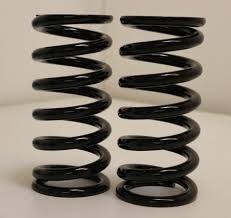Where are you located? The very first thing to do is up the rear spring rate to at least double (450 to 500 lb should do). Yes this can be difficult to find a spring to go in the std location. If you have fabrication skills look at cutting the chassis spring mounts off. Make new top and bottom mount to suit some coil over type springs.

If you are really handy make up some base spring adjusters so you can corner weight the car. Going this way with a std coil over types springs makes it cheap to play with rates. Some work making them fit but then quite cheap and easy to buy and fit springs.
This is perhaps not what you want to hear, however, it will transform your L200 more so than touching the front (for now). If you don’t believer me jam some hard wood in the rear springs across the diameter to cancel one whole coil from working (drill some holes and use big zip ties to hold it in place). Go for a drive (for safety I only advise doing this on private property and take no responsibility for any testing on public roads).
Damps/shocks for the back - Hyundai Excel. I’ve used Koni red which give some adjustment and Sachs adjustable which had some external adjustment (the top crush tube does need to be trimmed a couple of millimetres per side). They are a little shorter which is beneficial. Once your rates are right the car should be picking up the inside wheel off the ground. A long shock will leave some weight on the ground. It’s a front wheel drive and you only need three wheels in contact in corners. With the inside rear wheel off the ground you have that weight transferred diagonally to the opposite front corner.
So all up. Higher rear spring rate. Now you made a comment about people saying “keep it stock”. You need to stay near the stock front spring rate which is about 120in/lb. If you up the rate you take away grip. Soft to ensure the wheels track the road. On the front go up in rate as you run out of travel. Leave perhaps 10% extra travel from hitting the bump stop and if not going near that percentage soften it up. IE, measure shaft length, put a zip tie on, drive around fairly normally/inc fast, check the zip tie has left 10% or so travel such that there is an emergency amount of bump. Best not to be hitting the bump stops all the time and that extra 10% you’ll have up your sleeve for “emergency”
situations. That is a little over simplified as damping speed is a contributor.
I would strongly advise against investing in upgrading the L200 struts alone. I’ve been there and the design allows axle flex and the brakes are awful. Before looking at coil overs look into L500 control arms with L500 or M100 struts and knuckle steering arms. You get the big brakes and the front hub bearing sits hub/knuckle rather than the hub hanging off the axle. Here’s the hard part. You will need to swap out the drive shafts with L500 ones. One side just goes in, the other needs to be lengthened.
I could talk about coil overs, but have a think about my suggestions and have a read through this. Not quite track. Mr Gormsby's L200